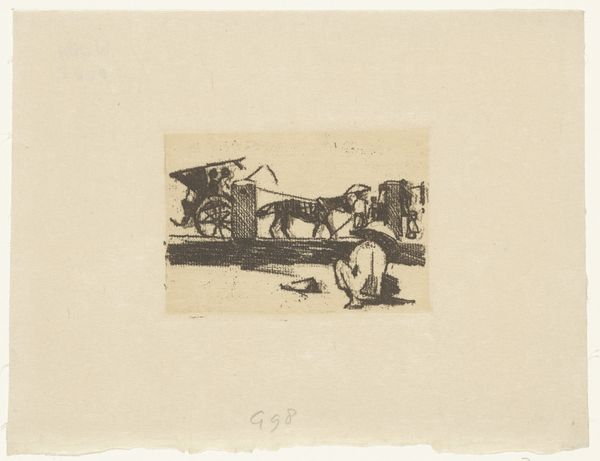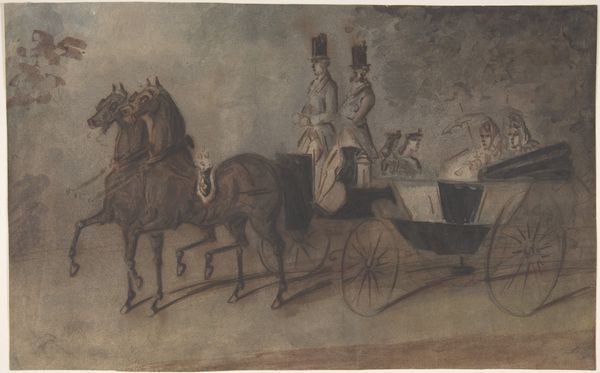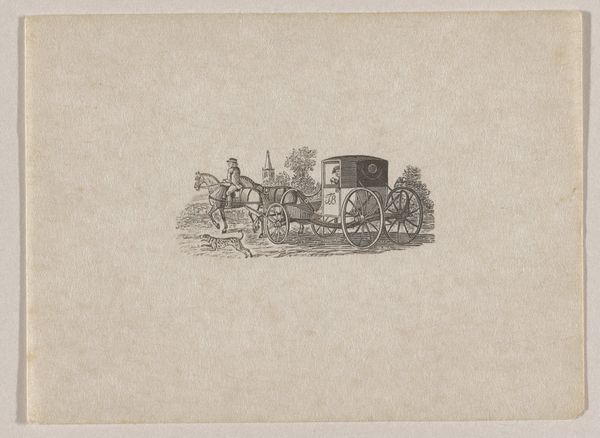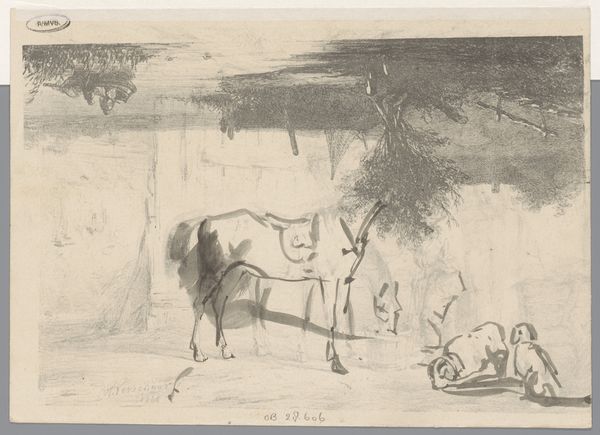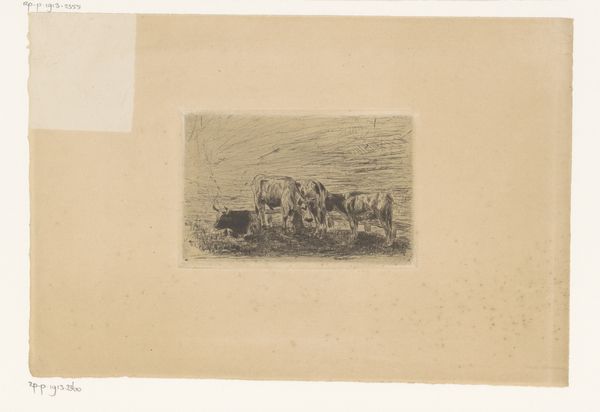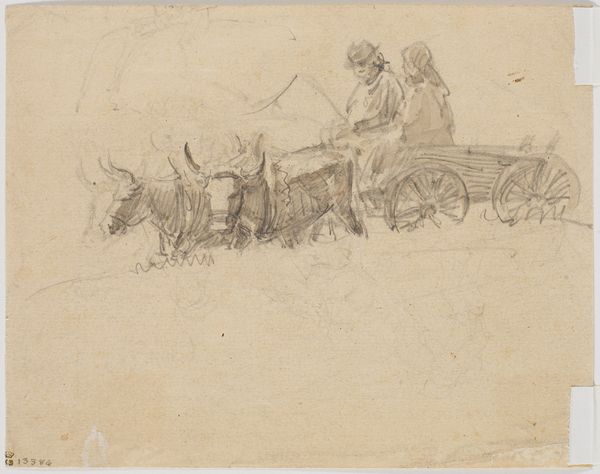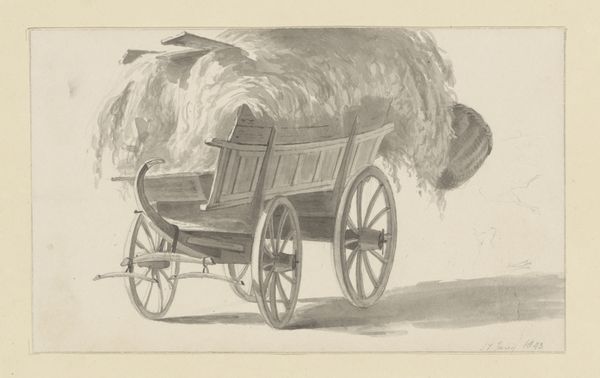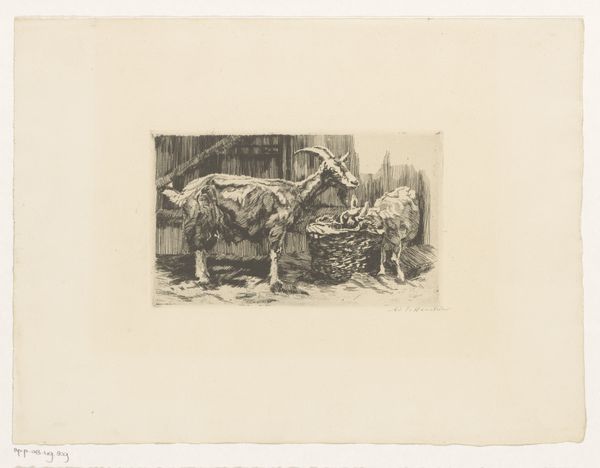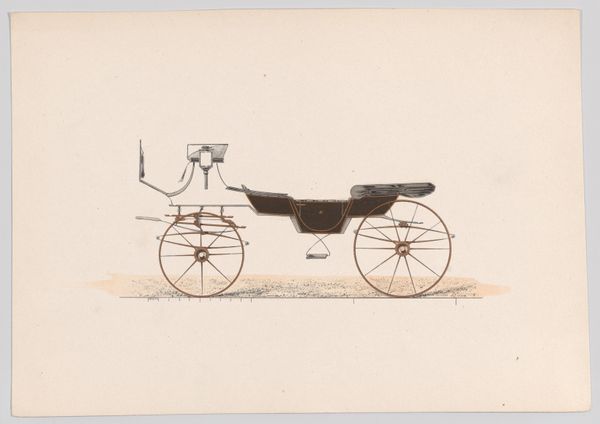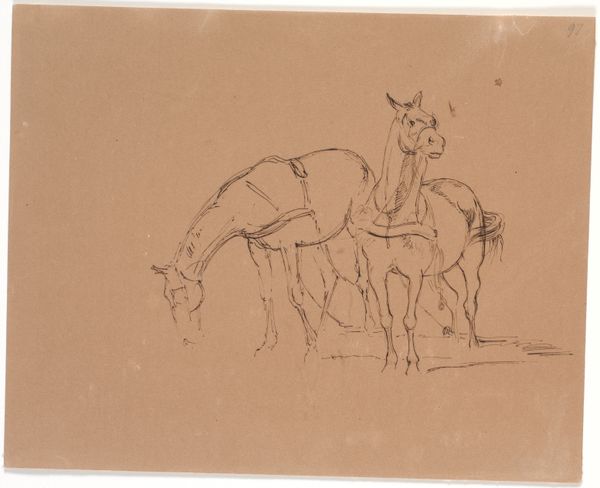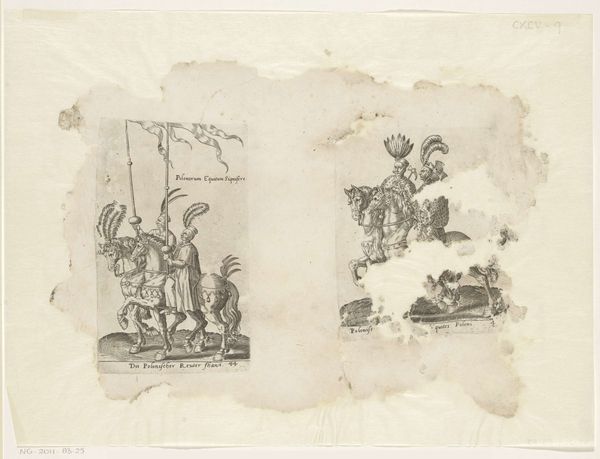
drawing, print, ink
#
drawing
#
ink painting
# print
#
landscape
#
ink
#
coloured pencil
#
line
#
cityscape
#
genre-painting
#
realism
Dimensions: height 228 mm, width 304 mm
Copyright: Rijks Museum: Open Domain
Curator: Looking at this print by Willem Witsen, titled "Carriage under Waterloo Bridge, London," dating from around 1890 to 1906, what are your first thoughts? Editor: It's…gloomy. The muted tones, the almost skeletal horse…it speaks of industry, but also of its human cost. Curator: Precisely. Witsen, known for his role in the Dutch revival of etching, often depicted urban scenes that reflect not just the physical landscape but also the social realities. London, at this time, was a booming imperial capital. Editor: But there’s also the reality of class division inherent in such rapidly urbanising centres. The presence of the carriage immediately makes me think of privilege navigating the lived experiences of the many. The spectral quality that the muted tones add to the image lends the artwork an ominous feeling, which may gesture to that tension. Curator: I completely agree. And this isn't a simple snapshot. The "carriage," and the elite it transports, becomes almost ephemeral, which I think effectively demonstrates the anxieties associated with modernity in general. Editor: Considering the context of the late 19th century, that “ephemeral” quality reflects anxieties linked to social status. The image really encapsulates the mood of a time that’s shifting, as capitalism grows and colonialism thrives at the expense of entire populations. How much control, really, do the ruling classes have when their impact extends so broadly? It’s unsettling. Curator: Exactly! By choosing the rarely-seen, darker, more industrial London, and rendering it with such a delicate yet haunting technique – a print composed with ink and coloured pencil – Witsen reveals how progress and prosperity came at the price of widespread precarity. Editor: Thinking about the present, it feels particularly pertinent in its reminder of the need to acknowledge these shadows behind industrial achievements. Witsen has provided more than just a visual record, but a testament to how that mood still holds sway.
Comments
No comments
Be the first to comment and join the conversation on the ultimate creative platform.


